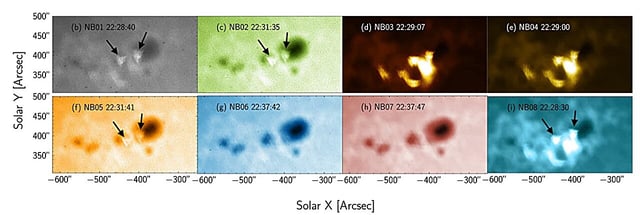Overview
- Aditya-L1, India’s first dedicated solar mission, observed an X6.3-class solar flare on February 22, 2024, one of the most intense solar eruptions recorded.
- The Solar Ultraviolet Imaging Telescope (SUIT) onboard captured the flare in the near-ultraviolet wavelength range (200-400 nm), offering unprecedented details of the lower solar atmosphere.
- This observation revealed bright 'kernels' in the photosphere and chromosphere, providing new insights into the dynamics of solar flares and energy transfer across solar layers.
- The findings validate long-standing theories while opening new avenues for understanding the complex physics of solar activities and their impact on space weather.
- Aditya-L1, launched in September 2023, operates from the Lagrange Point L1, enabling continuous 24/7 solar observation with its advanced instruments, including SUIT, SoLEXS, and HEL1OS.

